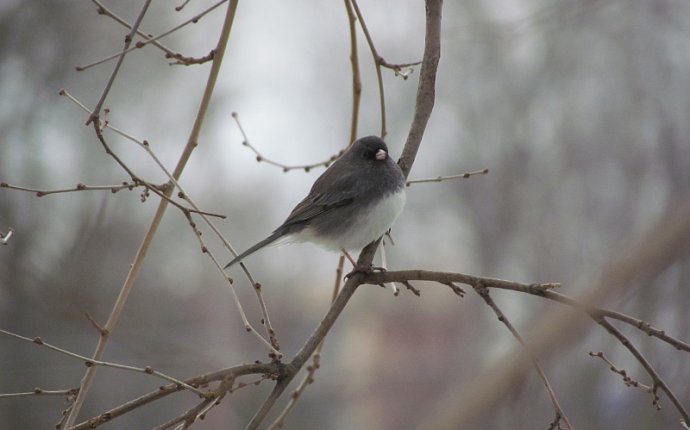
Dark Gray Bird with white breast
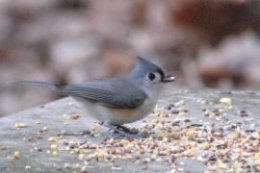
|
Tufted Titmouse |
Northern Mockingbird Northern Mockingbirds stay with us year-round unless you live really far north. Males and females are indistinguishable, and each defends its own feeding territory in wintertime backyards.
The slightly drooping wings are characteristic of the bird.
The only bird likely confused with this long-tailed common gray bird in the yard is the Gray Catbird (below). Unless you live in the deep South, however, you will have the Gray Catbirds only in summer. Any time of year, distinguish the mocker by its white wing bars.
To see a complete profile of this prolific singer and find out why it sings at night, why males and females fight each other in winter but grow sweet on each other in spring, and how to listen to recognize the difference between males and females, see Birds in the Yard Month by Month: What's There and Why, and How to Attract Those That Aren't.
Click here to read the book's introduction and to get information about where to find it.
|
Carolina Chickadee There perky little birds manage to survive severe winters. Lean about huddling, shivering, and caching in their complete profile in Birds in the Yard Month by Month: What's There and Why, and How to Attract Those That Aren't.
|
Carolina Chickadee (left and below), a bird of the south, and its look-alike cousin, the Black-capped Chickadee, a bird of the north, are quite difficult to separate, especially along the north-south line where the two populations meet. Among the favorite birds in the yard, chickadees stay year-round, caching seeds to survive the bad times. |
Gray Catbird
|
Compared to year-round Northern Mockingbirds, Gray Catbirds are darker gray, lack white wing bars, and have a dark-gray cap. It sings much like a mockingbird, but there are tricks to recognize the difference.Note, too, that unlike mockingbirds, catbirds sport a bright russet-colored undertail patch, barely visible here (left), and sometimes completely invisible depending on the angle at which you're watching the bird.
Click here to read the book's introduction and for information about where to find the book.
|
Two nuthatches, which are a pretty bluish-gray on their backs, join many birds in the yard, but which one comes to your yard depends on where you life. In a few cases, when the northern Red-breasted Nuthatch moves south, wintertime backyards may host both nuthatches.
White-breasted Nuthatch (left) is most common and nests throughout the Midwest.
In the north, Red-breasted Nuthatch (right) visits backyards to take black-oil sunflower seed. In irruptive years, the Red-breasted Nuthatch may move south in winter, sometimes way south. Pay particular attention to the birds' faces for best identification. The Red-breasted Nuthatch wears a mask; the White-breasted Nuthatch wears a clear white face.
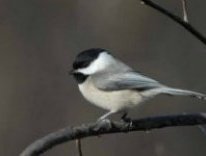 To learn more details about these little "upside down birds, " why most of us see only White-breasted Nuthatches, where they both nest, and how to recognize the differences in their similar songs, see Birds in the Yard Month by Month: What's There and Why, and How to Attract Those That Aren't.
To learn more details about these little "upside down birds, " why most of us see only White-breasted Nuthatches, where they both nest, and how to recognize the differences in their similar songs, see Birds in the Yard Month by Month: What's There and Why, and How to Attract Those That Aren't.
Click here to read the book's introduction and to get information about where to find it.
|
White-breasted Nuthatch joins birds in the yard year-round throughout the Midwest. Female Brown-headed Cowbirds look gray all over, both summer and winter. Males, with their name-sake brown heads, wear a glistening blue-black on the remainder of their bodies. |
Red-breasted Nuthatches, which breed in the far north, sometimes join southern wintering birds in the yard during irruptive years.
To find out about the Brown-headed Cowbirds' historical background and why they never build nests and what effect that has on other birds, see their complete profile in Birds in the Yard Month by Month: What's There and Why, and How to Attract Those That Aren't.
|
|
A male Brown-headed Cowbird, center, is flanked by two all-over gray females. In winter, you'll see these birds in the yard in sometimes quite large flocks. |
Female Brown-headed Cowbirds look all-over gray in summer and winter. |
To learn about and identify about 100 common birds in the yard, see Birds in the Yard Month by Month: What's There and Why, and How to Attract Those That Aren't.
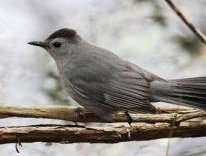
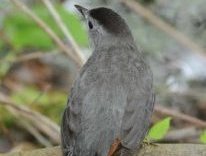
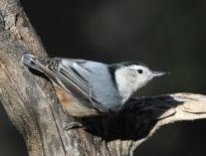
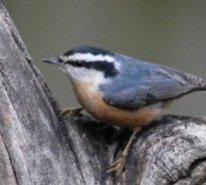
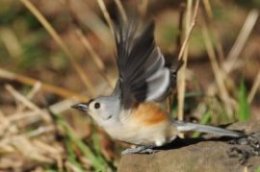 Click here to read the introduction and to get information about where to find it.
Click here to read the introduction and to get information about where to find it.
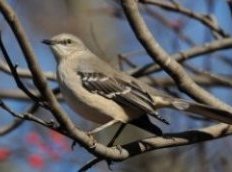 See Birds in the Yard Month by Month: What's There and Why, and How to Attract Those That Aren't to
See Birds in the Yard Month by Month: What's There and Why, and How to Attract Those That Aren't to 








